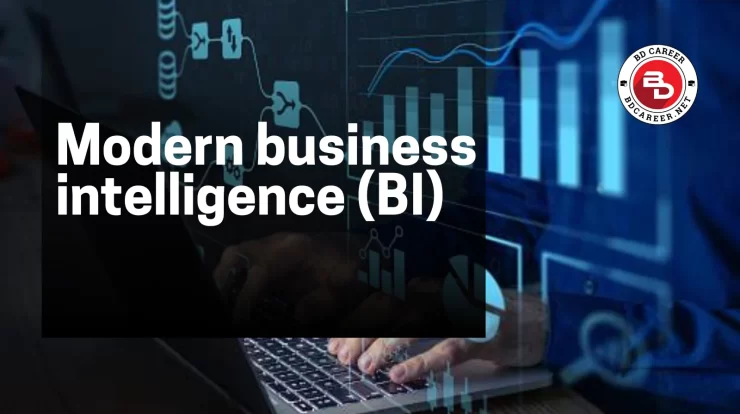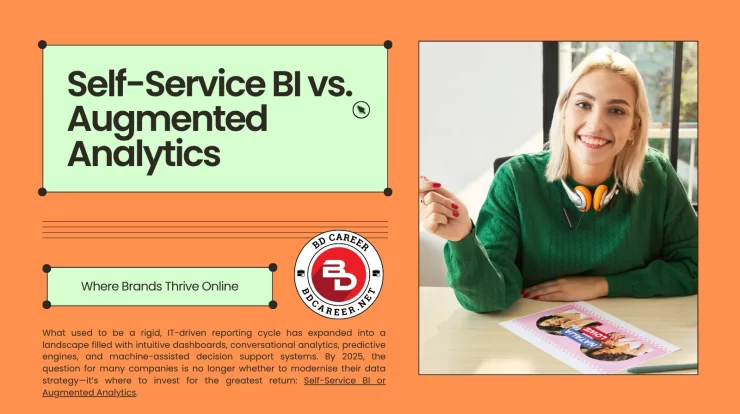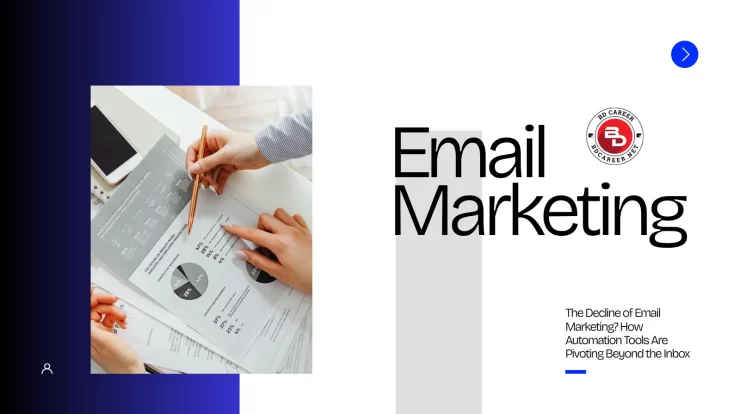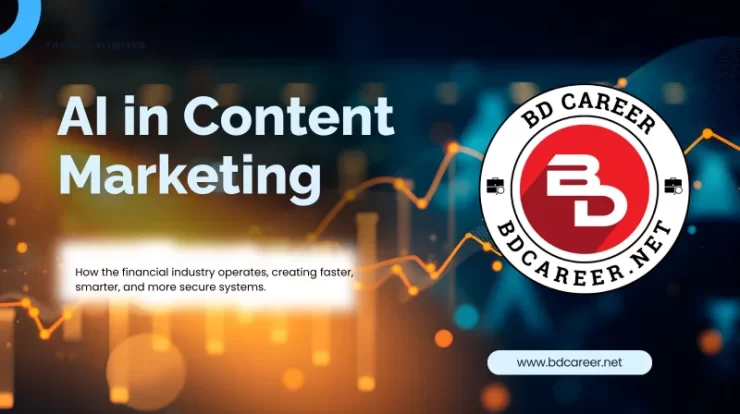
In the digital economy of today, information is the most important thing a business has. But raw data, no matter how big, is useless without the necessary tools to make sense of it. Historically, Business Intelligence (BI) has been mostly about historical data and descriptive analytics. But as businesses look for ways to go forward, data science software is changing BI from looking back at past events to making decisions based on what will happen in the future.
This move is more than just a trend. It’s a significant change in how businesses think about their customers, operations, and chances. Companies are making better, faster, and more important decisions by adding data science applications to their BI workflows.
Contents
The Convergence of Data Science and Business Intelligence
It’s crucial to know the difference between BI and data science in order to understand how things have changed. The main goal of business intelligence is to gather, store, and display data in order to figure out “what happened.” Dashboards, scorecards, and query reports are the most common tools in this area.
Data science, on the other hand, goes deeper. It employs machine learning (ML), artificial intelligence (AI), and statistical models to answer the question “why did it happen?” “What will happen?” and “What should we do next?” When BI and data science are combined, companies gain the best of both worlds: easy-to-understand visual reports and actionable predictions.

Core Functions of Data Science Software in BI
Data science software adds a number of sophisticated features to BI tools:
1. Cleaning and preparing the data
Raw data is sometimes chaotic, with duplicates, outliers, missing values, or discrepancies. Analysts can efficiently clean, structure, and standardise huge datasets with data science tools like Python (with Pandas or NumPy), R, or RapidMiner. This makes sure that company decisions are based on correct, high-quality data.
2. Predictive Analytics and Forecasting
Data science platforms use algorithms like regression models, decision trees, and neural networks to predict patterns in sales, customer behaviour, or financial performance. For instance, an online store might utilise these technologies to figure out which customers are most likely to leave their shopping carts.
3. Dashboards and visualisation in real time
Tableau and Power BI are two examples of visualisation tools that can now work with data science workflows to show model results in real time. Managers can see dynamic dashboards with scenario modelling, risk assessments, and real-time KPIs instead of static reports.
4. Processing of natural language (NLP)
NLP features let BI solutions take unstructured data like emails, customer reviews, and social media sentiment and turn it into structured insight. Companies utilise this for a wide range of things, such as designing new products and analysing customer support data.
Key Software Platforms Powering the Shift
A few data science platforms stand out for how they have changed the BI landscape:
1. R and Python
These languages, which are free to use, are still the most important ones for data research. Python is popular because it can do a lot of different things and has a lot of libraries (like Scikit-learn, TensorFlow, and Pandas). R is good for statistical analysis and visualisation. R and Python both work nicely with BI dashboards to create bespoke analytics.
2. Microsoft Power BI and Tableau
These tools used to be mostly for visualisation, but today they come with built-in AI functions. For example, Power BI works with Azure Machine Learning, which lets you use predictive modelling in reports.
3. KNIME and RapidMiner
These platforms have low-code environments where you can create ML pipelines. Business analysts who don’t know how to code can use drag-and-drop workflows to do complicated data science tasks like classification, clustering, or sentiment analysis.
4. SAS and IBM Watson</h3>
Enterprise-grade platforms like SAS offer strong data governance and statistical modelling tools. IBM Watson adds AI features like NLP and computer vision to BI workflows. These are utilised a lot in healthcare, finance, and customer service.
There are pros and cons to each tool in terms of cost, how hard it is to learn, and how well it can grow with your firm. However, all of them enable a smarter way to do business analytics.

Businesses That Transformed with Data Science Software
Retail: Predictive inventory and prices that change over time
Walmart and Amazon employ data science to figure out how much demand there will be, make their supply chains work better, and change prices on the fly. Algorithms look into sales trends, consumer preferences, and outside elements like the weather to figure out how to refill quickly and make the most money.
Finance: Finding fraud and dividing customers into groups
Banks like JPMorgan Chase and fintechs like Stripe utilise machine learning models to find fake transactions as they happen. At the same time, clustering algorithms group clients based on their behaviour, which makes marketing and service more personal and focused.
Healthcare: Diagnosis and Information About Patients
Hospitals utilise IBM Watson and Python-based models to look at patient data and figure out how likely they are to get sick. For instance, being able to forecast the likelihood of readmission lets you take action before it happens, which leads to better patient outcomes and lower costs.
Logistics – Route Optimisation and Demand Forecasting
Logistics Route Optimisation and Demand Forecasting Logistics corporations like FedEx and UPS use data science to optimise routes by looking at real-time traffic and weather data. This cuts down on gasoline use, makes sure deliveries are on time, and makes customers happier.
These instances show that data science isn’t just for big tech companies. It’s becoming easier and cheaper for smaller businesses to use as software grows more user-friendly.
Challenges and Considerations
Even if it has a lot of potential, combining data science with BI has its own set of problems:
1. Privacy and compliance with data
As rules like GDPR and HIPAA become stricter, businesses need to make sure that their data science models handle private information in a responsible way. Anonymising data, getting consent, and having a secure infrastructure are all very important.
2. Lack of Skills and Shortage of Talent
Not all businesses have a group of data scientists. “Citizen data scientists” are people who aren’t experts but use simple tools like KNIME or Power BI’s AI visuals to learn things without having to write code.
3. Difficulty of Integration
It can be hard to add data science capabilities to old BI systems. To make sure that data flows smoothly between databases, analytics platforms, and visualisation tools, you need to plan your architecture carefully.
4. Price and ability to grow
Enterprise solutions can cost a lot, and open-source tools need people who know how to use them. Companies need to find a balance between functionality and cost, especially if they want to be able to grow in the future.

Data Science and the Future of Business Intelligence
Automation, AI, and democratisation will be the main forces behind the next stage of BI evolution:
Making decisions using AI
Businesses will start using autonomous decision-making systems as AI models become more reliable and open. For example, instead of letting a manager know that there isn’t enough stock, the system may automatically reorganise the product based on how much it thinks will be needed.
Custom apps and analytics built in
BI insights won’t just be in dashboards anymore. With embedded analytics, these insights can show up right in corporate systems like CRM, ERP, or even mobile apps. This makes choices more immediate and relevant.
The Growth of Citizen Data Scientists
More people, like marketers, HR professionals, and operations managers, can do advanced analysis thanks to low-code tools and AI copilots. This decentralisation will speed up the spread of a data-driven culture in businesses.
Generative AI for Business Intelligence
Generative AI, such as ChatGPT or Copilot in Microsoft products, is starting to make sense of data, write reports, and even suggest what to do. For instance, a CEO may query a BI assistant, “Why did sales in the Southeast region drop in Q2?” and get an answer backed up with real-time statistics and pictures.
Conclusion
Data science software is no longer solely for engineers and statisticians. It’s a valuable tool for every modern business. Companies may go from looking back to looking forward, and finally to looking ahead in a competitive way, by adding predictive modelling, AI-powered automation, and real-time visualisation to their BI.
Businesses need to do more than just talk about the past to perform well in today’s market. They also need to be able to forecast the future. And with the correct data science software running their BI systems, that future is now close at hand.





